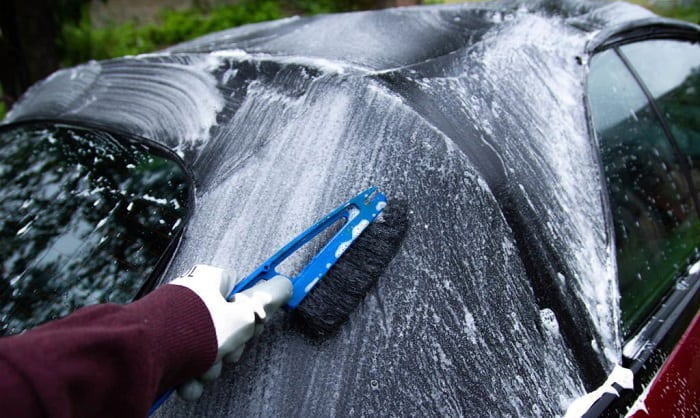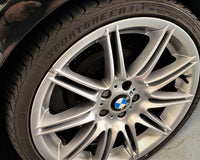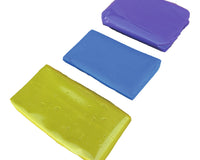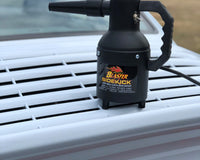Owning a soft top convertible is a delightful experience, but to maintain its appeal and longevity, proper cleaning and detailing of the soft top roof are essential. Regular maintenance will keep the roof in pristine condition, protect it from damage, and preserve its functionality. In this article, we will provide a step-by-step guide on how to clean and detail a soft top convertible roof, ensuring it remains in top-notch shape for years to come.
Materials Needed
- Soft bristle brush
- Mild soap or convertible top cleaner
- Soft microfiber towels or sponge
- Soft toothbrush or detailing brush
- Water hose or pressure washer
- Fabric protectant or convertible top sealant
- Vinyl or rubber protectant
Step 1: Prepare the Work Area
Choose a shaded or covered area with enough space to comfortably work on your convertible roof. This area should be free from direct sunlight. Exposure to sunlight during the cleaning process can cause cleaning agents to dry too quickly and potentially leave residue or streaks on the roof. Additionally, ensure that the area is well-ventilated to allow for proper air circulation. Clear any obstacles or clutter from the work area to provide ample space for movement.
Having a clean and organized space will make the cleaning process more efficient. Gather all the necessary cleaning materials and place them within easy reach. This includes soap or cleaner, brushes, towels, and protectants. Having everything prepared and accessible will save time and allow you to maintain a smooth workflow throughout the cleaning process.
Step 2: Remove Loose Debris
Before applying any cleaning solution, it's important to thoroughly remove any loose debris from the soft top roof. Use a soft bristle brush or your hands to gently sweep away leaves, twigs, and other visible particles. Start from the highest point of the roof and work your way down, ensuring that any dislodged debris falls away from the roof.
Be cautious not to apply excessive force or scrub too vigorously, as this can potentially scratch or damage the surface of the roof. Pay close attention to the corners, crevices, and seams of the roof, as debris tends to accumulate in these areas. By removing loose debris, you prevent them from scratching or further soiling the roof during the cleaning process.
Step 3: Rinse the Roof
If your convertible roof is noticeably dirty or has accumulated dust and grime, it's beneficial to give it a thorough rinse. Using a water hose or pressure washer on a low setting, rinse the roof thoroughly. Start from the highest point and work your way down, ensuring that all areas are covered. Adjust the water pressure to a gentle setting to avoid damaging the roof material.

Step 4: Apply Cleaning Solution
Choosing the right cleaning solution is crucial to ensure effective and safe cleaning of the soft top roof. Select a mild soap specifically formulated for cleaning convertible tops or use a specialized convertible top cleaner. These products are designed to be gentle on the fabric or material of the roof while effectively removing dirt, stains, and contaminants. Read the manufacturer's instructions regarding dilution ratios, and mix the cleaning solution accordingly.
Starting from the back of the roof, apply the cleaning solution evenly across the entire surface. It's recommended to use a sponge or microfiber towel for this step. Dip the sponge or towel into the cleaning solution and gently spread it onto the roof. Work in small sections to ensure thorough coverage. Pay attention to any stubborn stains or heavily soiled areas, allowing the cleaning solution to dwell for a few minutes on those spots to help break down the grime.
By using a suitable cleaning solution and applying it evenly, you ensure effective and safe removal of dirt, stains, and contaminants from the soft top roof.
Step 5: Gently Agitate and Clean
Once the cleaning solution is applied, it's time to agitate and clean the soft top roof. This step involves gently scrubbing or rubbing the cleaning solution into the fabric or material to effectively remove dirt, grime, and stains. Use a soft microfiber towel or sponge for this process. Apply light pressure and work in small sections, starting from one end and systematically moving across the roof.
Gently agitate the surface using circular motions or back-and-forth motions, depending on the texture of the fabric or material. Be cautious not to scrub too vigorously, as this can damage the roof material. Focus on stained or heavily soiled areas, giving them a bit more attention and gentle scrubbing to ensure proper cleaning.
For hard-to-reach or intricate areas such as seams or crevices, use a soft toothbrush or detailing brush to dislodge dirt gently. These brushes have soft bristles that can reach into tight spaces without causing damage. By agitating and cleaning the roof in a gentle manner, you effectively remove dirt, grime, and stains without causing any harm to the fabric or other components.
Step 6: Rinse Thoroughly
After you have finished cleaning the soft top roof, it's crucial to rinse off all the cleaning solution thoroughly. Use clean water to rinse the roof, ensuring that all traces of the cleaning solution are completely removed. Begin rinsing from the highest point and work your way down, ensuring a comprehensive rinse of the entire surface.
Pay extra attention to seams, folds, and hard-to-reach areas where residue may accumulate. Thorough rinsing is essential to prevent any residual cleaning solution from causing discoloration or damage to the roof material over time.
Make sure to rinse from multiple angles to ensure that all areas of the roof receive adequate rinsing. Take your time and be thorough to ensure that the roof is free from any cleaning solution residue.
Step 7: Dry the Roof
Once the roof is thoroughly rinsed, it's essential to allow it to air dry naturally. Choose a shaded area for this step to prevent direct sunlight from causing uneven drying or potential damage to the roof material. Avoid using heat sources or towels to speed up the drying process, as this can cause water spots or streaks. Instead, be patient and let the roof air dry completely.
Proper drying is crucial to prevent moisture from being trapped within the fabric or material, which can lead to mould, mildew, or other damage. It's important to ensure that the roof is completely dry before proceeding to the next step or covering the vehicle. If needed, you can use a clean microfiber towel to blot any remaining moisture, but avoid rubbing the roof surface aggressively.
Step 8: Apply a Fabric Protectant
After the roof is completely dry, it's time to apply a fabric protectant specifically designed for convertible tops. These protectants create a barrier that repels water, prevents staining, and helps maintain the overall appearance of the roof.
Follow the manufacturer's instructions regarding application and drying time. Start from the back of the roof and work your way forward, ensuring even coverage across the entire surface. Use a sponge or microfiber towel to spread the protectant, paying attention to any folds, seams, or hard-to-reach areas.
Allow sufficient drying time before exposing the roof to any moisture. By applying a fabric protectant, you enhance the durability and longevity of the soft top roof while keeping it looking its best.
Step 9: Treat Vinyl or Rubber Components
If your convertible top has vinyl or rubber components, such as window seals or trim, it's important to apply a suitable protectant to these areas. Choose a product specifically designed for vinyl or rubber surfaces and follow the manufacturer's instructions for application.
Apply the protectant evenly to these components, ensuring they are well protected and maintained. Be cautious not to apply the protectant to the fabric or other non-compatible surfaces. By treating the vinyl or rubber components, you preserve their flexibility, prevent cracking, and maintain their appearance.
Step 10: Regular Maintenance
To keep your soft top roof in excellent condition, it's crucial to establish a regular maintenance routine. Promptly remove any debris that may accumulate on the roof, such as leaves or twigs, to prevent them from causing damage or staining. Spot clean any stains as they occur using a mild soap or cleaner specifically formulated for convertible tops. Gently agitate the stained area with a soft brush or sponge, then rinse thoroughly.
Additionally, periodically reapply the fabric protectant as recommended by the manufacturer to maintain its effectiveness. Regular maintenance ensures the roof stays clean, protected, and visually appealing for an extended period. By adopting a consistent maintenance routine, you prolong the life of your soft top roof and minimize the need for extensive cleaning or repairs.
Conclusion
By following these detailed explanations for each step, you can effectively clean, detail, and maintain your soft top convertible roof, ensuring its longevity, preserving its overall appearance, and enhancing your driving experience.




